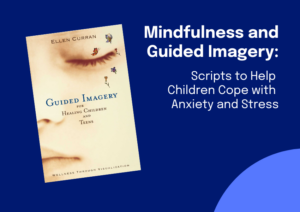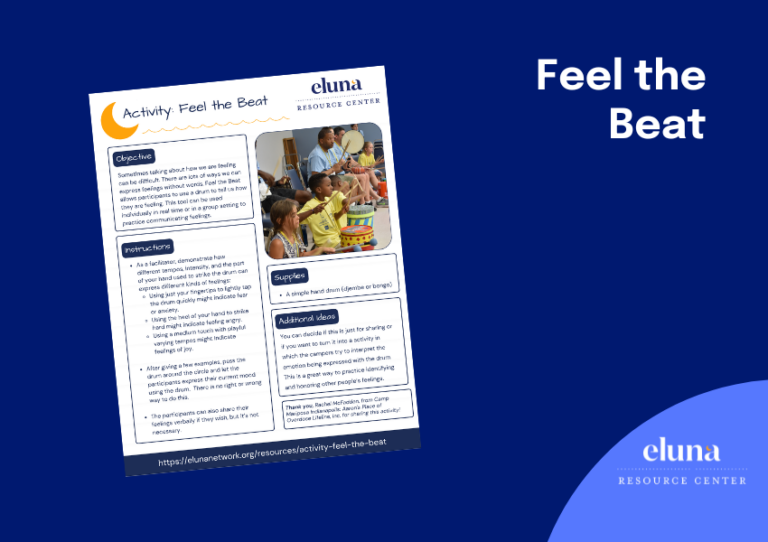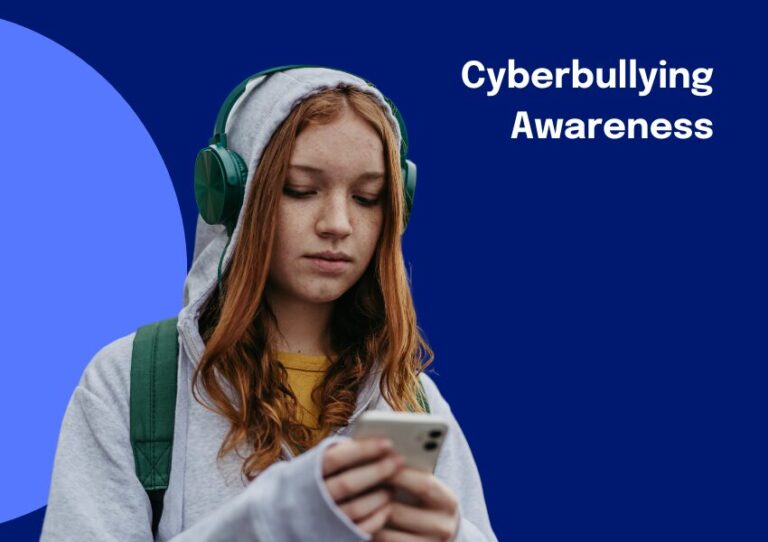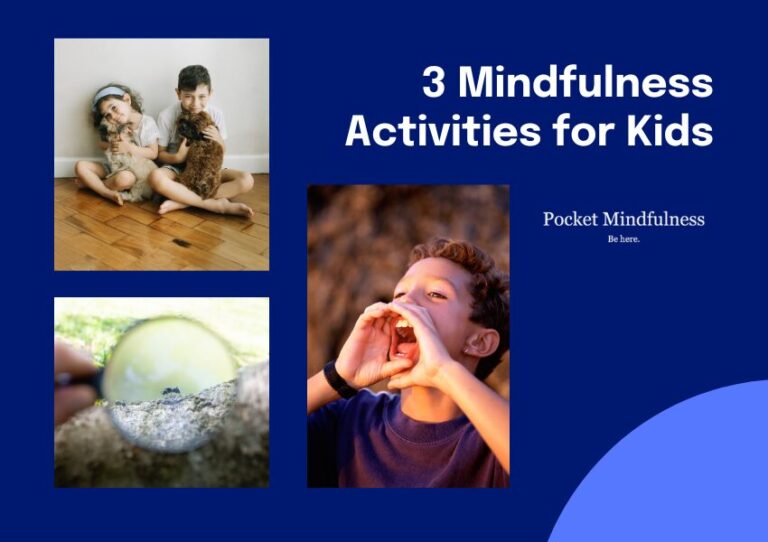Mindfulness and Guided Imagery: Scripts to Help Children Cope with Anxiety and Stress
 Today’s children are facing sensory overload. From an early age, entertainment and information have just been a click away—TV, movies, video games, Internet, cellphones, e-books and other technological gadgetry. Though technology has become a leisure activity, it overstimulates our senses, reduces our personal contact and decreases the amount of exercise we engage in—anything but relaxing.
Today’s children are facing sensory overload. From an early age, entertainment and information have just been a click away—TV, movies, video games, Internet, cellphones, e-books and other technological gadgetry. Though technology has become a leisure activity, it overstimulates our senses, reduces our personal contact and decreases the amount of exercise we engage in—anything but relaxing.
Though parents may limit their children’s screen time, we’re continually bombarded by information and technology. Being so plugged-in tunes us out and moves us away from connecting to ourselves and to each other.
Despite our best efforts to create a balanced lifestyle, stress creeps into our daily lives. So many of us are overstimulated and over-scheduled. Our children are no exception. Adults may not realize how stressed out our children are. The world has become more complicated and it’s no longer just school and peer pressures that impact kids. Free play time has diminished as a plethora of extracurricular activities jump in to fill every spare moment. Children are exposed to live-coverage of natural disasters, wars and other negative media that may induce worry and stress in children. So it’s not surprising that anxiety-related disorders in children and teens are on the rise.
Children, especially younger ones, aren’t able to identify feelings of stress and anxiety as easily as adults. They may not connect their stomach aches, headaches, restlessness or irritability as being symptoms of anxiety. Depending on the child’s age and cognitive ability, emotions may be a difficult idea to grasp because they’re such abstract concepts. Feelings like sad and happy can be easily understood, but disappointment, frustration, grief and anxiousness are harder to conceptualize. Since feelings can be confusing and overwhelming, helping your child to identify and become mindful of their feelings will help them navigate difficult times. Mindfulness techniques can be introduced to children at an early age, which will help them to develop self-awareness and mastery over their feelings.
Benefits of guided imagery
A natural way to introduce children to mindfulness is through guided imagery. Guided imagery is a meditative process that uses visualization and imagination to bring awareness to the mind-body connection. Children can easily access this healing process because they’re naturally imaginative. By relaxing into a vivid story they gain tools to deal with stress, pain or difficult feelings. It’s a wonderful way to connect with your child as they learn to listen to their inner wisdom and access their own power of healing.
Guided imagery can be beneficial for a variety of issues and the process can be tailored to suit your child’s specific needs. It can help reduce stress in all children, but it can also help with specific issues like sleep problems, test anxiety, back-to-school jitters or illness. It can enhance coping skills, encourage self-esteem, increase creativity and boost the immune system.
For more serious problems, guided imagery is recognized as a form of treatment for anxiety, depression, learning disabilities, Attention Deficit Disorder, and to help patients prepare for surgery and procedures. Considered an alternative therapy for years, guided imagery is now gaining widespread acceptance in the medical and scientific world. Psychology Today reported on a study in The Journal of Pediatrics, which found that guided imagery significantly reduces chronic stomach pain in children. In this study, 30 children with chronic stomach pain listened to guided imagery CDs over an eight-week period; 63.1 per cent experienced a significant decrease in their pain compared to just 26.7 per cent in the control group who only received traditional medical care. An interesting side note to this study was the children’s complete compliance—everyone enjoyed listening to the guided imagery CDs so much that they all wanted to complete the study.
Further research is showing that practicing guided imagery can create new neural pathways and reinforce positive behaviours. Our brains can’t distinguish between real events and imagined ones. When you imagine yourself in a situation your brain releases biochemicals based on your feelings about the person or event. For example, remembering a heated argument will release stress hormones in your body. While focusing on a loving person or joyful experience will increase levels of endorphins and serotonin, making you feel more relaxed and positive. Guided imagery encourages the brain to imagine positive and healing experiences, which helps to develop healthy coping skills and master new behaviours. By focusing your mind’s eye on accomplishing goals and creating a desired image of yourself, your brain creates new pathways to reinforce this behaviour. This technique has been used for years by trainers and athletes to successfully build confidence and improve performance.
Getting started with guided imagery
Guided imagery is directed by a script, either read by an adult or listened to on a recording. The script guides your child on a journey specific to their area of need. There are a growing number of guided imagery resources (refer to our resource pages for suggestions). As you become more familiar with the process you may want to personalize your scripts or create your own based on your child’s interests. Experiment with what works for your child.
Guided imagery should be done in a quiet environment, away from interruptions, TVs and electronics. Playing soft, relaxing music can help shut out background noise. And using the same music each time can help create a sensory reminder for the body to relax. Before starting a guided-imagery script, guide your child through a relaxation exercise to make them comfortable and to deepen the experience.
Deep breathing exercises or progressive head-to-toe relaxation is effective. Many of these techniques can be found with the guided imagery scripts. As you introduce guided imagery to your child you’re creating a safe and special place for them to go. They will journey to wonderful, peaceful places designed by themselves—places they can visit anytime they need to. Your child will meet personal guides—who may appear as people, animals, or spiritual figures—who will put them in touch with their own wisdom and healing powers.
As you guide your child through this experience, it’s important to allow them to have their own inner experience so provide lots of encouragement and opportunities for processing and reflection. To maximize the benefits of guided imagery it should be practiced several times a week over several months. If your child is dealing with a specific problem or illness, daily practice is best. Here are some ideas to get you started.
In our busy, distracted world, the concept of mindfulness and the practice of guided imagery are invaluable gifts you can give to your child. As they grow and face new challenges, guided imagery provides children with a lifelong tool that can help to build confidence, cope with stress and access inner wisdom.
The big white house
This script helps older children and teens to gain perspective and deal with everyday stress. (From Guided Imagery For Healing Children and Teens by Ellen Curran):
[white castle] Imagine walking along a long white beach. You can hear the gulls and the gentle roll of the waves. Your feet sink into the warm, white sand. It is quiet and safe. You are alone walking into the soft sea wind. The sun is shining down on you, making you warm. You have been looking for a place to be quiet and comfortable. This feels as if it is your beach, yours alone.
You stop and stand, looking out over the immense expanding ocean. It shows its green top-water, its purple mid-water, and its gray powerful underwater. The colors are mixing and churning, creating the bubbly white crest at the top of each wave. The roll of each wave sounds like the Earth, breathing. O…cean. O…cean. Over and over again with each wave. You feel the power of the ocean and the Earth.
A short distance ahead of you, you now notice a big, white house. It is beckoning to you. It looks like a temple or small castle of some sort. You walk towards it, relaxed and interested. Your follow a short path to the house and see that the large door is open. Your feel that it is perfectly OK for you to go inside. It is safe and calm.
You step out of the sunshine and into the coolness of this beautiful house. You find yourself in a huge hallway with plants and paintings. A magnificent, marble staircase stands before you. You know you want to go up those stairs. You become aware of a very heavy backpack that you have been carrying all this time. The backpack is full of your worries, troubles, concerns, and negative feelings. You have been carrying them for a long time and you realize that this backpack is weighing you down. Your shoulders ache, and your back feels tight and stiff from all these feelings.
Slowly remove your backpack and with it all your worries and concerns. You feel released, free! You can now easily ascend the staircase. Each step you take, you become lighter, happier, and quieted. Each step brings you closer to absolute comfort and joy. The comfort and joy live in you, and now there is nothing to get in the way of feeling them, reaching them, having comfort and joy.
Now at the top of the stairs, you are strong and certain. A large window is open at the top of the stairs, and in front of it is a big, white comfortable chair. You sit down and face the window, watching the magnificent ocean once again. This time is yours. You watch from your chair, by your window in your house. Breathe in the soft ocean air, and know you are home.”
In our busy, distracted world, the concept of mindfulness and the practice of guided imagery are invaluable gifts you can give to your child. As they grow and face new challenges, guided imagery provides children with a lifelong tool that can help to build confidence, cope with stress and access inner wisdom.


